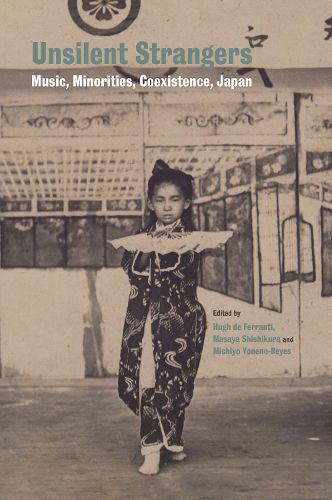Readings Newsletter
Become a Readings Member to make your shopping experience even easier.
Sign in or sign up for free!
You’re not far away from qualifying for FREE standard shipping within Australia
You’ve qualified for FREE standard shipping within Australia
The cart is loading…






This collection of essays on the music of migrant minorities in and from Japan examines the central role music plays in the ongoing adjustment, conciliation and transformation of newcomers and "hosts" alike. It is the first academic text to address music activities across a range of migrant groups in Japan-particularly those of Tokyo and its neighbouring areas. It is also the first to juxtapose such communities with those of Japanese emigrants as ethnic minorities elsewhere. It presents both archival and fieldwork-based case studies that highlight music in the dynamics of encounter and attempted identity making, under a unifying framework of migration.
A radical change in policy with the 2019 introduction of a new "Specified Skilled Worker" visa category marked the beginning of Japan's "new immigration era" (imin gannen). The authors in this volume interrogate and shed light on the bureaucratically disseminated slogan of tabunka kyosei, rendered in English as "multicultural coexistence". The concept itself and the many problems of realizing this ideal are examined through ethnography-based accounts of current minorities, including South Indians, Brazilians, Nepalis, Filipinos, Iranians and Ainu domestic migrants, and in light of comparative historical accounts of California and Australia. This volume will be of interest to ethnomusicologists, students of the cultures of migrant communities, and those engaged with cultural change and diversity in Japan and East Asia.
$9.00 standard shipping within Australia
FREE standard shipping within Australia for orders over $100.00
Express & International shipping calculated at checkout
This collection of essays on the music of migrant minorities in and from Japan examines the central role music plays in the ongoing adjustment, conciliation and transformation of newcomers and "hosts" alike. It is the first academic text to address music activities across a range of migrant groups in Japan-particularly those of Tokyo and its neighbouring areas. It is also the first to juxtapose such communities with those of Japanese emigrants as ethnic minorities elsewhere. It presents both archival and fieldwork-based case studies that highlight music in the dynamics of encounter and attempted identity making, under a unifying framework of migration.
A radical change in policy with the 2019 introduction of a new "Specified Skilled Worker" visa category marked the beginning of Japan's "new immigration era" (imin gannen). The authors in this volume interrogate and shed light on the bureaucratically disseminated slogan of tabunka kyosei, rendered in English as "multicultural coexistence". The concept itself and the many problems of realizing this ideal are examined through ethnography-based accounts of current minorities, including South Indians, Brazilians, Nepalis, Filipinos, Iranians and Ainu domestic migrants, and in light of comparative historical accounts of California and Australia. This volume will be of interest to ethnomusicologists, students of the cultures of migrant communities, and those engaged with cultural change and diversity in Japan and East Asia.